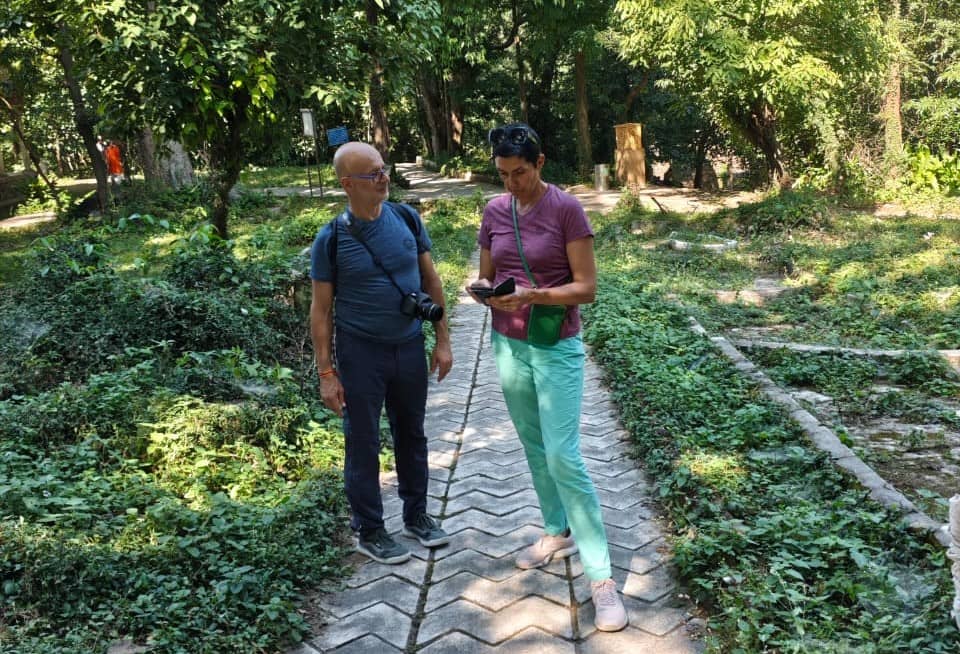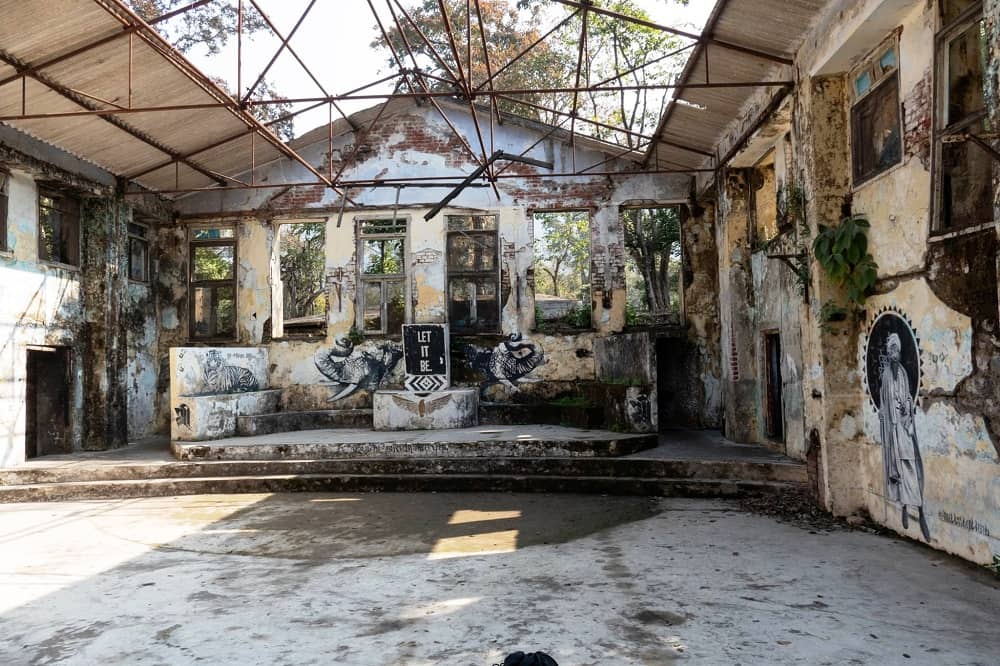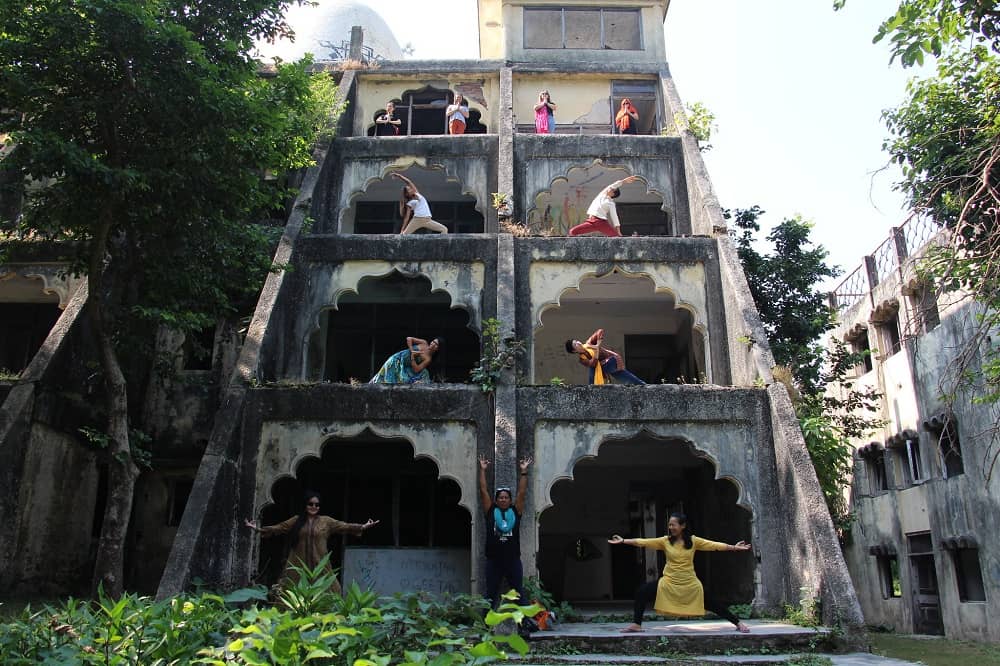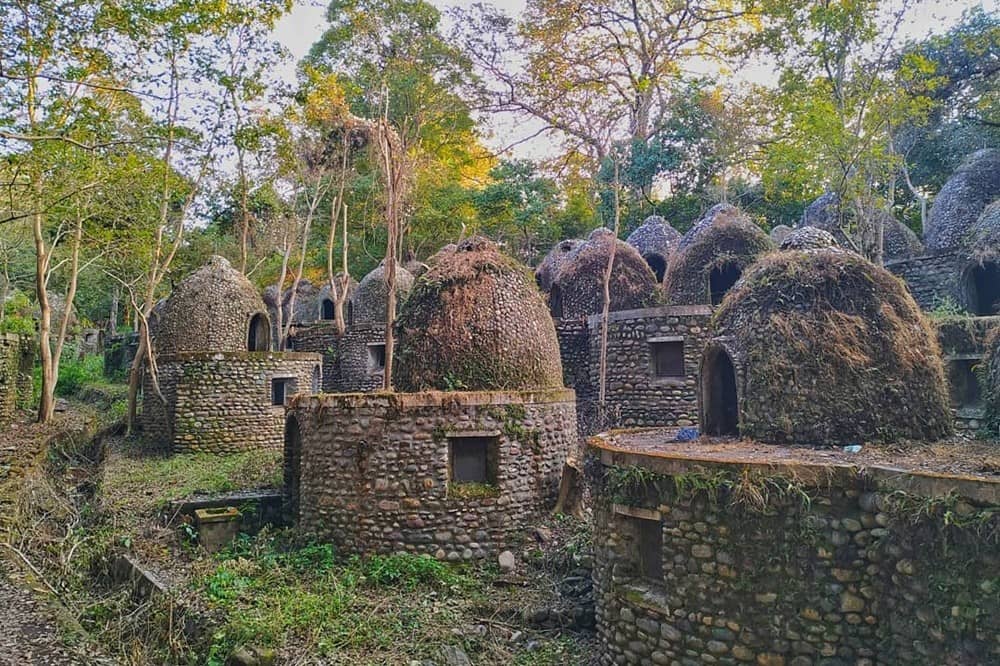The Beatles Ashram: A Journey Through Music and Spirituality
Rishikesh, often referred to as the “Yoga Capital of the World,” is renowned for its serene landscapes and spiritual significance along the banks of the sacred Ganges River. However, one of its most famous landmarks is the Beatles Ashram, formerly known as Chaurasi Kutia, where the legendary band The Beatles sought spiritual enlightenment and creative inspiration in 1968. This journey delves into the history of the Ashram, its significance, the creative genius unleashed within its walls, and the transformative experiences of those who visited this now-abandoned site.
Beatles Ashram Opening Time
The Beatles Ashram, also known as Maharishi Mahesh Yogi Ashram, is a historic cultural site located in Rishikesh, India, where the iconic band famously practiced Transcendental Meditation in 1968.
The ashram is open to visitors daily from 10:00 AM to 4:00 PM, providing a perfect opportunity to explore its serene environment and fascinating history. Visitors can take in sights such as the dome-shaped meditation huts and vibrant graffiti murals celebrating the Beatles’ legacy.
Entry fees are quite reasonable, with charges of INR 150 for Indian citizens and INR 1200 for foreign tourists. The best time to visit is from October to April, when the weather is pleasant, making your exploration of the site’s renowned tranquility and historical significance all the more enjoyable.

The History of Beatles Ashram
In 1961, Maharishi Mahesh Yogi established this retreat as a center for his teachings on Transcendental Meditation (TM). It gained widespread attention after The Beatles’ visit from February to April 1968, marking a revolutionary intersection of Western pop culture and Eastern spirituality.
Located on a lush hillside, the Ashram housed around 84 meditation huts, which were simple yet comfortable, offering tranquility away from the hustle of fame.
As The Beatles immersed themselves in meditation practices, they wrote an unparalleled number of songs, thus linking their creativity with the spiritual teachings received from the Maharishi. This period marked a profound change in their musical direction – a transition from the vibrant sounds of their earlier works to more introspective themes, epitomized in their iconic “White Album.”
The Beatles’ Quest for Spirituality
The impetus behind The Beatles’ journey to India stemmed from their search for peace and self-discovery amid the chaos of their fame. They were particularly influenced by George Harrison, who spearheaded their interest in Maharishi Mahesh Yogi’s teachings. Initially, The Beatles attended a TM seminar in Bangor, Wales, but it was only after the death of their manager, Brian Epstein, that they decided to commit fully to their Indian pilgrimage.
Upon their arrival in Rishikesh, the media buzzed with excitement as the Fab Four delved into their spiritual practices. Surrounded by nature, they engaged in daily meditation, attended lectures from the Maharishi, and explored Eastern philosophy. This period allowed them not only to recharge but also to reflect deeply on their lives and musical careers.

Creative Explosion at the Ashram
While at the Ashram, The Beatles were remarkably productive. They penned a remarkable number of songs amidst the ashram’s peaceful environment. Notable tracks inspired by their experience include:
- “Dear Prudence” – Written by John Lennon, this song was dedicated to Prudence Farrow, who was deeply engrossed in meditation during the band’s stay.
- “Mother Nature’s Son”, “Blackbird”, “Revolution”, and “While My Guitar Gently Weeps” also bear traces of their experiences and the tranquil Himalayan surroundings.
In total, it is estimated that they wrote 30 songs, with many eventually appearing on the “White Album.” Contributions from Harrison demonstrated his growing love for Indian instrumentals, with his influence paving the way for a fusion of Western and Eastern music styles.
The Current State of the Beatles Ashram
Despite its rich history, the Beatles Ashram fell into disrepair after the Maharishi moved on from the site in the late 1970s. Abandoned in the 1990s, it became an overgrown relic, frequented by graffiti artists and curious fans who sought to pay homage to the band. In December 2015, the site was reopened to the public as a historical site with an entrance fee aimed at supporting conservation efforts.
As visitors wander through the remnants of the once-bustling ashram, they encounter overgrown huts, crumbling lecture halls, and vibrant murals that pay tribute to The Beatles. Despite its dilapidated condition, the Beatles Ashram has transformed into a canvas of creativity. The walls are adorned with colorful art, with the Beatles Cathedral Gallery being a highlight, showcasing a fusion of iconic Beatles imagery and spiritual themes created by local and visiting artists.
Visitor Experience at the Beatles Ashram
Visiting the Beatles Ashram is akin to stepping back into a time capsule. The serene ambiance and natural beauty of Rishikesh engulf visitors as they walk through the jungle trails leading up to the Ashram. The entrance, once locked away, now welcomes curious travelers eager to connect with the band’s history.
Upon entry, you can explore the meditation huts, visualize the creative sessions held by the band, and reflect on the spiritual journey that profoundly shaped their music. Visitors often clutch their cameras, eager to capture the aesthetic beauty of the ruins, with the Ganges River flowing majestically below, creating a picturesque backdrop.

Tips for Visiting the Beatles Ashram
- Timing: The Ashram is open from 10:00 AM to 4:00 PM, providing a few hours to explore the grounds thoroughly.
- Tickets: Entrance fees are relatively modest, with 150 rupees for Indian nationals and 1200 rupees for foreigners. This fee contributes to upkeep efforts.
- Photography: The Ashram is filled with visual storytelling opportunities – be sure to capture the vibrant murals, unique architecture, and natural landscapes.
- Guided Tours: While many wander freely, consider joining a guided tour to learn more in-depth about the history and stories of The Beatles during their time at the Ashram.
Beatles Ashram Rishikesh Entry Fee
The entry fee for visiting the Beatles Ashram in Rishikesh varies based on nationality. For Indian citizens, the fee is ₹150, while for foreign nationals, it is ₹1200. Special discounts are also available for senior citizens and students, with fees set at ₹75 for seniors and ₹40 for students under 18 years old. This site, which draws many visitors due to its cultural and historical significance, is not only affordable but also offers a unique glimpse into the past of the iconic band and their connection to Indian spirituality.

The Beatles Ashram Story
The story of the Beatles Ashram, located in Rishikesh, India, begins in the late 1960s when the iconic British rock band, the Beatles, sought spiritual enlightenment. In 1968, they traveled to India to study Transcendental Meditation under the guidance of Maharishi Mahesh Yogi. This exploration of spirituality coincided with the band’s quest for inner peace and artistic inspiration, influencing their music profoundly.
During their stay, the Beatles spent time at the ashram, which was a former retreat for Maharishi Mahesh Yogi. They engaged in meditation, songwriting, and conversing with other Western seekers searching for spiritual growth. It is said that much of the material for their album “The White Album” was conceived during this period, showcasing the transformative effects of their experiences in India.
The Legacy of the Beatles Ashram
The enduring legacy of the Beatles Ashram lives on as a site of spiritual significance and a pilgrimage for music lovers worldwide. The band’s encounter with the Maharishi and their spiritual awakening resonated through their music, influencing countless artists and inspiring seekers of all ages to explore meditation and Eastern spirituality.
Today, Rishikesh stands as both a sacred site and a vibrant hub for yoga, adventure sports, and holistic wellness. The imprint of The Beatles upon this town carved a unique path for future generations to explore the intersections of music, art, and spirituality. With ongoing restoration efforts, the hope is for the Beatles Ashram to not only preserve its history but to also evolve into a world-class destination honoring The Beatles’ extraordinary impact.

Beatles Ashram from Laxman Jhula
The Beatles Ashram is located about 2 kilometers from Laxman Jhula, a popular tourist area in Rishikesh, India. The ashram, also known as the Maharishi Mahesh Yogi Ashram, can be easily reached by various means of transportation:
- Walking: If you’re up for it, a leisurely walk from Laxman Jhula to the ashram can be a pleasant experience, allowing you to soak in the natural beauty of Rishikesh. The route typically takes around 30-45 minutes depending on your pace.
- Auto-Rickshaw or Taxi: For a quicker trip, you can hire an auto-rickshaw or a taxi, which will get you to the ashram in about 10-15 minutes. This is a convenient option, especially if you’re traveling in a group or carrying heavy bags.
- Bicycle Rentals: Some local shops offer bicycle rentals, giving you an adventurous way to explore the area at your own pace. Riding a bike to the ashram can be a fun and eco-friendly choice.

The Beatles Yoga
The Beatles Ashram is situated in a tranquil area by the banks of the Ganges River, providing a serene atmosphere that attracts many spiritual seekers and fans of the Beatles alike. Visitors can explore its meditation huts, vibrant murals, and beautiful surroundings, making it a must-visit destination for those in Rishikesh.
The connection between The Beatles and yoga is deeply rooted in their transformative journey to Rishikesh, India, in 1968. This trip was largely inspired by their desire to explore spirituality and meditation, particularly through the teachings of Maharishi Mahesh Yogi, who was a pivotal figure in introducing Transcendental Meditation (TM) to the West.
Background and Influence
The Beatles first encountered the idea of yoga and meditation through their association with various teachers, including Swami Vishnu-Devananda in 1965. George Harrison’s growing interest in Eastern philosophy led him to study the sitar under Ravi Shankar, which further deepened the band’s connection to Indian culture.
By 1967, after experiencing a severe personal crisis marked by the death of their manager Brian Epstein, the group sought solace by learning from Maharishi Mahesh Yogi. They were drawn to his promise of inner peace through meditation.
In February 1968, The Beatles traveled to Rishikesh, where they stayed at the Maharishi’s ashram (now known as the Beatles Ashram). There, they engaged in intensive meditation practices, contributing to a period of remarkable creativity that influenced many tracks on the “White Album,” including songs like “Dear Prudence,” “Julia,” and “Blackbird” .
Impact on Music
The serene environment of Rishikesh provided the backdrop for The Beatles to dive deeply into their music and creativity. Their writings during this time reflected their spiritual experiences and the peaceful philosophy they were learning. The fusion of Indian spiritual themes with Western music served to bridge cultural gaps, making yoga and meditation more accessible to their fans and the Western audience in general.

The Aftermath and Legacy
Despite their initial enthusiasm, tensions arose, leading to their eventual departure from the ashram. John Lennon famously voiced disillusionment with the Maharishi following unsubstantiated allegations regarding the guru’s behavior, which strained their relationship.
Nonetheless, the impact of their time in India on popular culture and Western spirituality cannot be understated. Their involvement spurred a significant interest in yoga and meditation in the West during the late 1960s and 1970s, encouraging many to explore these practices further.
Today, the Beatles Ashram stands as a historical site, attracting visitors interested in both the band’s legacy and the broader context of yoga in modern wellness culture. The flourishing of yoga studios and meditation practices across the West can be partially attributed to the cultural shift that The Beatles played a significant role in establishing.
In conclusion, The Beatles’ journey to Rishikesh and their exploration of yoga and meditation not only enriched their music but also profoundly influenced the perception of Eastern spirituality in the West, helping to popularize these practices among a broader audience. The legacy of their experiences continues to resonate in both music and wellness cultures today.
Conclusion: A Musical Trek to Remember
The Beatles Ashram is more than just an abandoned site; it represents a transformative chapter in music history and a fusion of East and West that continues to inspire. Those who venture to Rishikesh not only tread in the footsteps of legends but also discover a personal journey toward peace, creativity, and perhaps a deeper connection to their own spirituality. Whether drawn by the allure of the Beatles or the serene beauty of Rishikesh, every visitor leaves enriched by the musical vibrations that linger in the air – a true testament to the power of art and spirituality combined.
This travel blog seamlessly captures the essence of the Beatles Ashram while expanding on its historical, cultural, and musical significance. With bold keywords, engaging descriptions, and a wealth of information, readers will find themselves enthralled by this unique destination. If you’d like to further refine any sections or explore additional themes, feel free to let me know!

